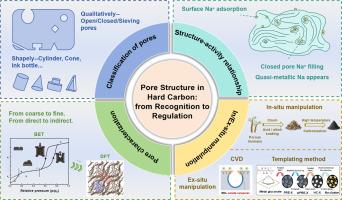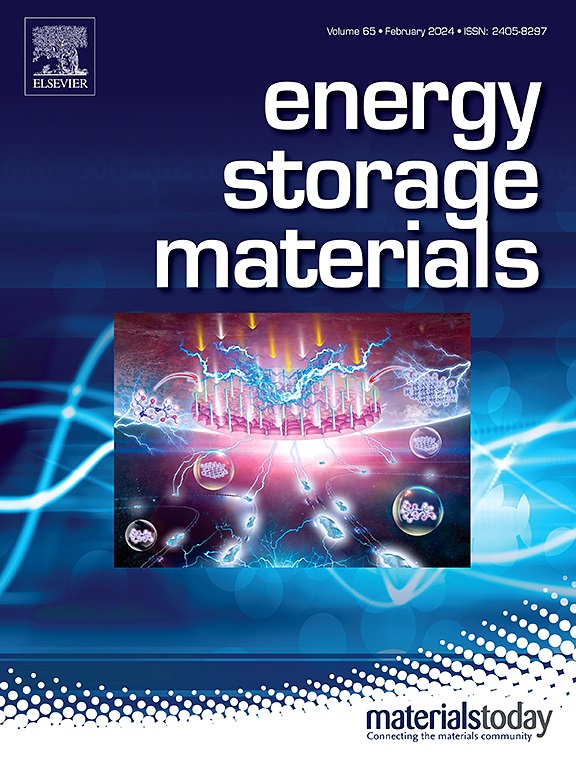Pore structure in hard carbon: From recognition to regulation
IF 18.9
1区 材料科学
Q1 CHEMISTRY, PHYSICAL
引用次数: 0
Abstract
Hard carbon (HC) has garnered significant attention as the most commercially promising anode material for sodium-ion batteries (SIBs), owing to its wide distribution, low cost, and abundant resources. However, challenges have arisen in recent years regarding its application in SIBs due to variations in Na storage mechanisms and performance resulting from its diverse microstructure. The diversity of microstructures in HC, resulting from different precursor systems, presents a formidable challenge to the elucidation of the mechanism and regulation of Na storage in HC. A comprehensive understanding of the diverse pore structures in HC is pivotal for rational modulation of its structure and performance, as well as for comprehending its Na storage mechanism. This review initially discusses the classification, structure, and characterization methods of nanopores in HC. Subsequently, it elucidates the relationship between these nanopores and their electrochemical properties, encompassing open pores, closed pores, and sieving pores. Finally, it introduces and prospects common approaches for manipulating disordered carbon multi-structure. This review is anticipated to offer a viable research direction for the field of HC, facilitating the rational design of high-capacity carbon anodes, and accelerating the industrialization process of SIBs.


求助全文
约1分钟内获得全文
求助全文
来源期刊

Energy Storage Materials
Materials Science-General Materials Science
CiteScore
33.00
自引率
5.90%
发文量
652
审稿时长
27 days
期刊介绍:
Energy Storage Materials is a global interdisciplinary journal dedicated to sharing scientific and technological advancements in materials and devices for advanced energy storage and related energy conversion, such as in metal-O2 batteries. The journal features comprehensive research articles, including full papers and short communications, as well as authoritative feature articles and reviews by leading experts in the field.
Energy Storage Materials covers a wide range of topics, including the synthesis, fabrication, structure, properties, performance, and technological applications of energy storage materials. Additionally, the journal explores strategies, policies, and developments in the field of energy storage materials and devices for sustainable energy.
Published papers are selected based on their scientific and technological significance, their ability to provide valuable new knowledge, and their relevance to the international research community.
 求助内容:
求助内容: 应助结果提醒方式:
应助结果提醒方式:


